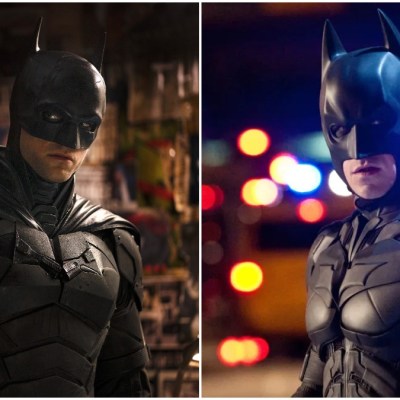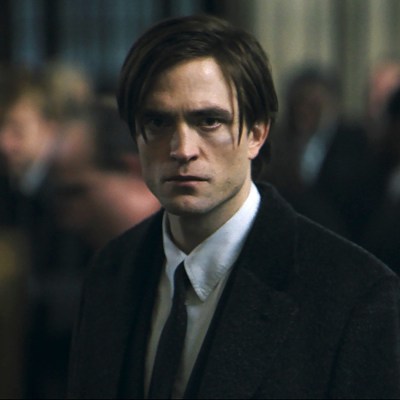The Batman vs. Zack Snyder’s Batman: How Are They Different?
How is the shadowy sleuth of Matt Reeves’ The Batman different from the hardened killer of the Snyderverse?
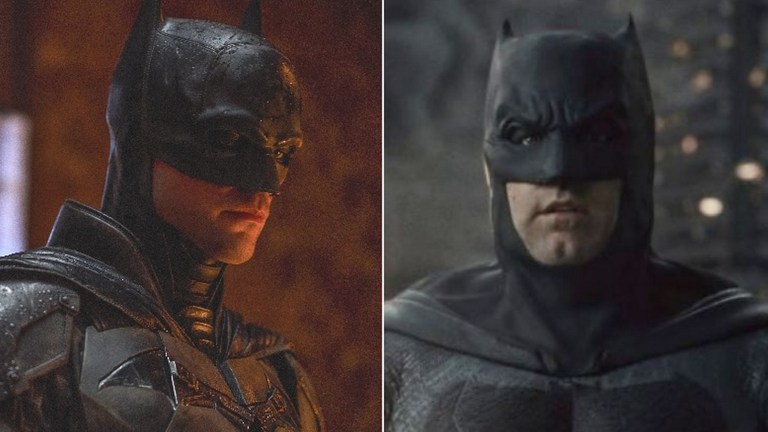
This article contains spoilers of The Batman and the DCEU.
It’s been nearly a decade since the release of a solo Batman movie, 2012’s The Dark Knight Rises, and as we approach the 10-year anniversary of the much-debated conclusion to Christopher Nolan’s acclaimed Dark Knight trilogy, a new standalone film about the Caped Crusader, Matt Reeves’ The Batman, is now in theaters.
But meanwhile, in the interregnum between the end of Nolan’s mostly brilliant triptych and what we hope is the beginning of a new series of Batfilms under Reeves’ watch, a different variation of Gotham’s protector showed up in two (or three, or even four, depending on how you look at it) movies between 2016 and 2021. Zack Snyder’s version of Batman, played by Ben Affleck, debuted in Batman v Superman: Dawn of Justice, cameo’d in David Ayer’s Suicide Squad, then starred in the 2017 iteration of Justice League and Snyder’s restored, expanded, and revamped 2021 edition.
Affleck and Snyder’s Batman may not quite be the Timothy Dalton of the long line of actors who have played the Dark Knight, but there are some parallels to that Welsh actor’s two-film run as James Bond. For one, despite what we said above, Affleck’s reign technically only lasted for two full motion pictures. Like Dalton’s 007, Affleck’s Bat was supposed to be more ruthless and obsessive, in contrast to Christian Bale’s version in the Nolan movies, who saw his role as a civic duty but still yearned to quit the job.
Affleck’s Batman/Bruce Wayne was long past quitting, even if he had to build even heavier armor to protect his aging physique. But we’re not here to compare and contrast Bale’s Caped Crusader with Affleck’s; we’re ready to put Affleck side by side with his successor, The Batman’s Robert Pattinson, and see where and how the two are similar and where and how they diverge. It’s R-Battz vs. the Batfleck: how do they compare?
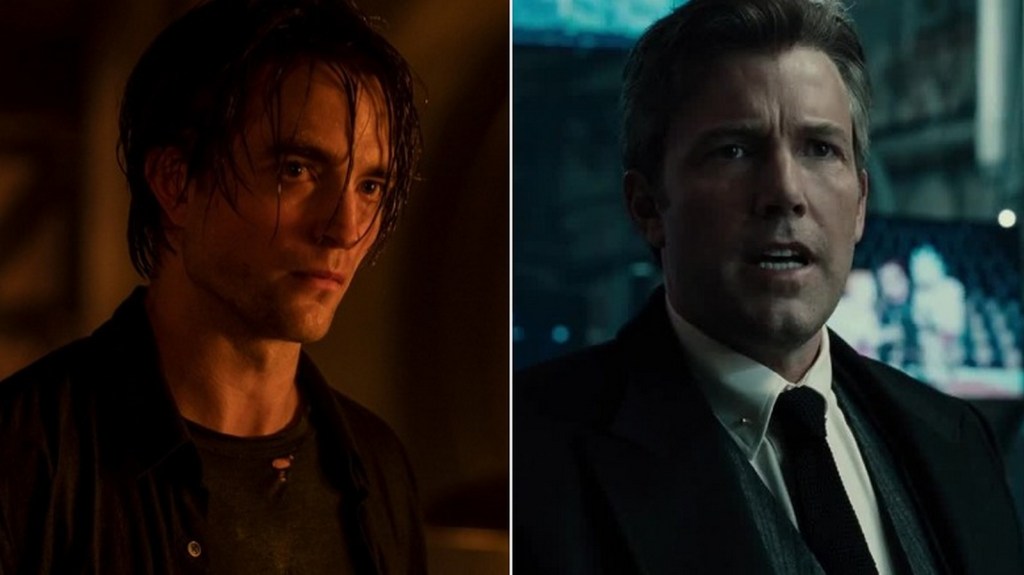
Bruce Wayne and the Batman
The Bruce Wayne/Batman of Matt Reeves’ movie is young and still coming into his own as Gotham’s Dark Knight. He’s been on the job for two years (although strangely that’s probably less time than Bale’s version, who worked the streets for probably 12-18 months before going into retirement for eight years), and while he’s brutally efficient and effective at fighting crime on the ground, he’s not sure at the onset of The Batman if he’s having any kind of impact on his city.
He’s also physically more vulnerable and capable of mistakes. A direct blast from a shotgun doesn’t pierce his suit but it does incapacitate him, and a heroic flight over the streets of Gotham in a wingsuit ends with him crashing to the ground when his parachute gets stuck on an overpass.
The most important aspect of Reeves and Pattinson’s take on the Dark Knight is that he’s even more vulnerable mentally than physically. This Bruce Wayne, somewhere in his mid-20s, has not resolved his trauma over the death of his parents, and becoming Batman is of course the way he does it. But he’s not doing it necessarily for the good of Gotham; he’s working out his own rage and grief and acting out of a need for revenge — famously, his mantra for most of the film is “I am vengeance.”
This Bruce Wayne is not the playboy of years past either, and he does not interact with Gotham society as both Bale and Affleck’s Bruce Waynes do: he’s reclusive, almost nihilistic, not interested in his own life, his standing in the city, his vast fortune, or the well-being of his company. Calling him a “cross between Kurt Cobain and Howard Hughes,” Reeves says in the film’s production notes, “I wanted him to have almost a recluse rock-and-roll vibe…Bruce has retreated from being a Wayne and if you see him, it’s like seeing a rock star, but instead of going out and playing gigs at night, his gig is to be Batman.”
Pattinson’s Batman fights out of a place of pure emotion — even though he’s an excellent detective (although also capable of error) and methodical thinker, he has a “level of rage” which fuels the way he does battle and makes him a terrifying opponent. But yet, most importantly and in line with the classic mythology, he does not kill. That puts him closer to the Bale Batman than the Affleck one, who kills and maims his victims without a second thought.
In some ways, the Bruce/Bat we meet in The Batman could actually evolve into the Caped Crusader of the Snyder movies, should his worst tendencies dominate.
Affleck’s Wayne moves around the daytime world, but at night he is almost a force of nature, his massive armor and weaponry far more destructive and powerful than any of the hand-crafted gear that Pattinson’s Batman is wielding, driving, or wearing. Pattinson operates out of a dark, dilapidated tower in the middle of Gotham, with the cluttered, unkempt, dusty Batcave below carved out of an abandoned subway tunnel. Affleck has left his Wayne Manor to rot, operating instead out of a modern glass abode on the edge of a lake, far outside the city limits, with the Batcave as sleek and high-tech as possible.
Affleck’s Batman murders and mutilates, as we’ve said, and his cynical, world-weary “hero” is very much in line with the quasi-fascist view of superheroes that permeates the entire Snyderverse. In his view, the world is his responsibility alone, might makes right, and justice needs to be doled out by any means necessary. He’s not concerned with questions of morality. Yet his dark view of the world and homicidal impulses cloud his thinking as well — he’s easily manipulated by Lex Luthor into seeing Superman as an enemy instead of an ally.
By the end of Affleck’s stint as Batman, his Caped Crusader is somewhat more open to being part of a team and trusting the intentions of his teammates. By the end of The Batman, Pattinson’s Bruce Wayne realizes that he can step out into the light and perhaps have a greater influence on the citizens of Gotham by helping and not just terrorizing. But the way both men get to these slightly better places is very different.
Gotham City
Gotham City is very much a character in The Batman, perhaps more so than in any other Batman movie (although the Gothic fantasy land of the Tim Burton movies comes close). Whereas Joel Schumacher twisted Burton’s vision into a neon-lit psychedelic mix of circus and ancient Greek temples, and Nolan presented his “realistic” Gotham as more or less a modern American city (albeit one with a free, multi-level public transportation system), Reeves has something else in mind.
Despite the “grounded” nature of The Batman, Reeves’ Gotham City is an island unto itself, almost existing apart from the rest of the outside world (of which we hear almost nothing). The city is both overdeveloped and bustling, yet also labyrinthine, sick with shadows and rot, and full of abandoned, forgotten corners and places.
It’s a city perpetually shrouded in darkness, gray, or rain, with nary a ray of sunlight seen throughout the entire three hours of The Batman, and it’s also a city for whom its crumbling seawalls (which the Riddler shatters with some well-placed explosives to flood the streets) are a metaphor for the social and criminal pressures threatening to cause Gotham to collapse.
Production designer James Chinlund says in the film’s production notes, “Gotham had had a very powerful heyday, and over the years, corruption had led to this massive decay. As if time had stopped, much of the growth of the city was frozen in the past.”
As for the Gotham of the Snyderverse, it’s safe to say that it’s a relative non-entity in those movies. Most of Batman v Superman takes place in Metropolis — located just across the river from Gotham — and we see basically just a few rooftops in Justice League. The latter film is more globetrotting in nature, going to the ancient world, Russia, Themyscira, Norway, Central City, and space.
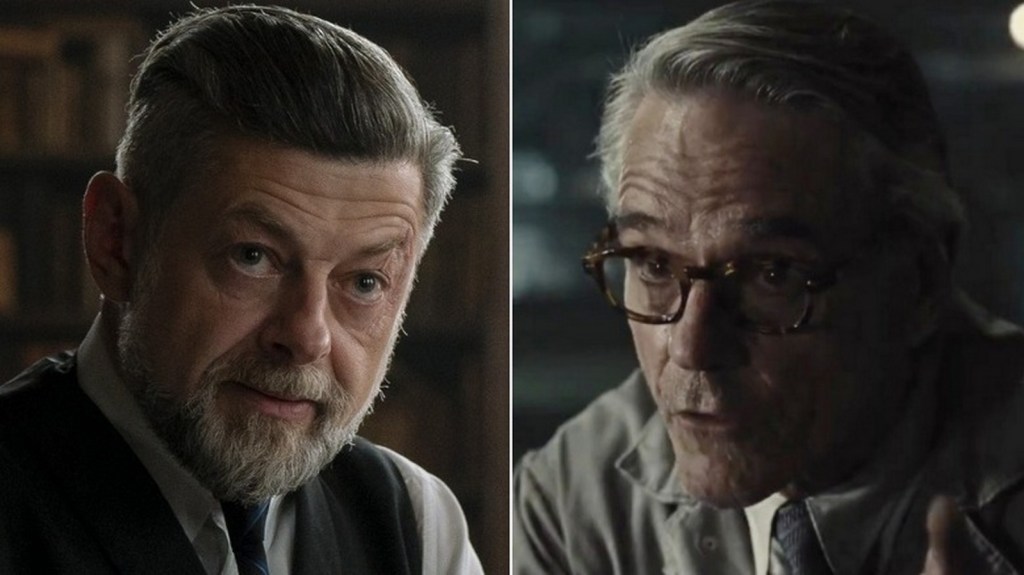
The Support Staff
One of the genuinely enjoyable aspects of Affleck’s two outings in the cape was his relationship with loyal manservant, mechanic, and technical genius Alfred, played with a prickly snarkiness by the great Jeremy Irons. This Alfred is super-competent and seemingly quite capable of working on anything that Batman needs him to, whether it’s the Batplane or a computer program.
There is a sarcastic affection between Alfred and Bruce — with Alfred always muttering something in exasperation under his breath — but a subtle respect as well, perhaps due to Bruce Wayne having made it 20 years in the cowl without getting himself killed. Yet Alfred is also quite aware of the mental state of the man he dutifully serves, and tries to make him as aware of that as possible.
“He has an interesting history,” Irons told Indiewire about his Alfred back in 2014. “He’s a very competent man…He can sort of do everything: change light bulbs, blow up bridges if he has to.”
Pattinson’s Bruce Wayne, on the other hand, has a very different relationship with his Alfred, played by Andy Serkis. The two do not speak as much, and this younger Bruce Wayne tends to shrug off the advice that Alfred gives him. Like the Irons version, the Serkis take on the character hints at a widely experienced background in the military, with a cane and some facial scars as mementos of his service.
He’s far less comfortable serving as a surrogate parent for Bruce, an aspect of the character that is important to the plot of The Batman — with Alfred carrying a heavy amount of guilt over his inability to be a true father figure to the young orphan. But Alfred is also fiercely protective of both Bruce and his late father, attempting to explain and justify the Wayne family’s somewhat more sordid history.
“Being a military man, he is used to rules and regulations, structure and precision,” Serkis told the Hollywood Reporter about his Alfred Pennyworth. “I wanted him to have that military solidity in the way he dressed and carried himself, which is ruffled with Bruce’s nihilism and refusal to listen to him anymore. It’s a relationship built on shifting sands.”
Both Batmen, Affleck and Pattinson, tend to work alone or with Alfred on their vehicles, wardrobe, and gadgetry (until of course, in the case of the former, he gets together with his Super-Friends). In other words, there’s no Lucius Fox in either of these universes.
One of the absolute best elements of The Batman is the relationship between the Bat and GCPD lieutenant James Gordon (Jeffrey Wright). The movie opens with Gordon and Batman already having a bond of respect and trust, with each recognizing the other’s strengths, and that bond is only deepened as they work together as a true team for the better part of The Batman’s runtime.
Wright is fantastic in the role — perhaps the definitive screen Gordon, all due respect to the terrific Gary Oldman — and he projects decency and humanity, providing a welcome counterpoint to both the corruption of just about every other official in Gotham and a sense of normality opposite Pattinson’s haunted, perhaps unstable Batman.
As for the Gordon glimpsed in the Snyderverse…while the idea of J.K. Simmons as Commissioner Gordon on paper sounds like ideal casting, we barely see enough of him in either version of Justice League. Simmons does what he can but has almost nothing to work with. The relationship between him and Batman is also strangely undefined, despite the Batman in these movies having been on the job for two decades. Perhaps he’ll have better luck when he shows up again in HBO’s upcoming Batgirl movie.
And finally, a word on Batman’s longtime and (in the movies) mostly invisible sidekick and ward, Robin: he’s doesn’t exist in The Batman and he’s already dead in Batman v Superman, killed at some point in the past by the Joker. So the idea of a partner in crimefighting isn’t even on Pattinson’s radar, while the murderous rage of Affleck’s Batman seems at least partially driven by Robin’s murder.
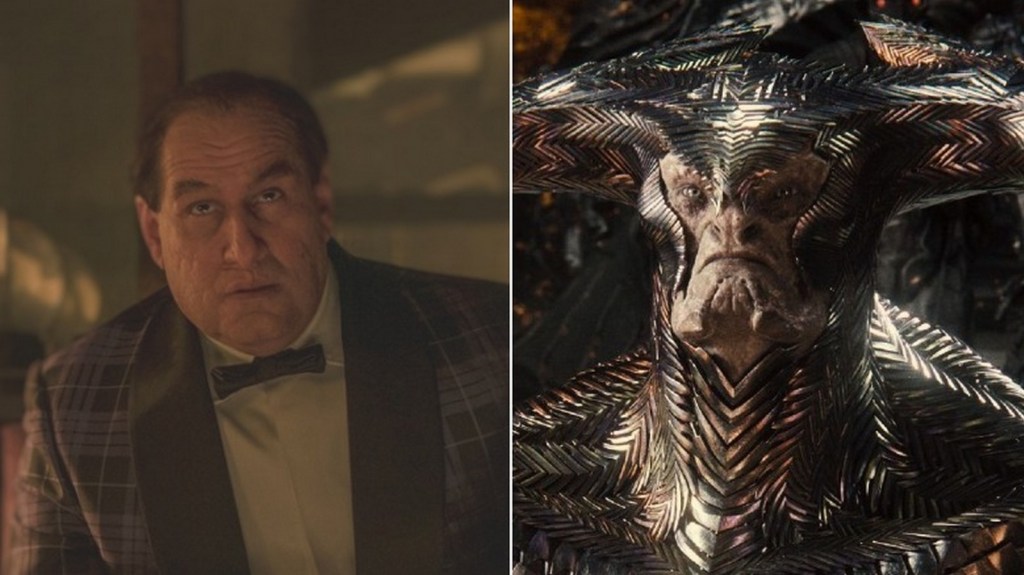
Heroes and Villains
Zack Snyder’s version of Batman backed into a jury-rigged DC film universe that was assembled on the fly once Warner Bros. Pictures saw how incredibly well Marvel had succeeded with The Avengers. But Marvel laid each piece carefully in place before unleashing the big team-up on the world. DC made exactly one movie, Man of Steel, before introducing us in haphazard fashion to the rest of what would become the Justice League.
So when Batman entered the scene in Batman v Superman: Dawn of Justice, he immediately found himself in a world that had been invaded by godlike beings from another planet — one of which had apparently been living and operating here for years.
We never got any indication of what Batman’s world was like before this — or what his version of Gotham was like. Did he fight fantastical villains like Man-Bat and Mr. Freeze, or did he stick to common gangsters and a few freakish psychopaths like Joker and Scarecrow? Either way, the Batman of the Snyderverse finds himself in a whole new world in Batman v Superman and Justice League.
Strangely, he and Alfred almost take it as a matter of fact — it’s Bruce, after all, who begins the quest to assemble the Justice League after Superman’s temporary death. Perhaps seeing Superman and Zod fight in the skies above Metropolis prepares him for meeting beings like Wonder Woman and Aquaman who are clearly also quite god-like in their abilities, if not quite on the level of Superman.
Then of course there are the enemies that Batman and his allies must face: first Lex Luthor himself (the only strictly human villain in either movie, but larger than life) and the Luthor-created Doomsday in Batman v Superman, then hordes of parademons, Steppenwolf, and the minions of Darkseid in Zack Snyder’s Justice League. In just his second outing in this universe, this version of the Caped Crusader is literally battling an army of outer space monsters. Reality be damned!
The Batman of the Reeves/Pattinson universe is working on an entirely different level. As The Batman begins (sorry), he is going after all the street-level criminals he can find and beat the shit out of, with nary a gadget or kryptonite spear in sight.
There’s no time for mythology about the gods of ancient Earth or space invaders or mother boxes or Amazons in the world of The Batman. Bruce Wayne and his city have enough problems.
The rest of the movie finds the Batman mixing it up with some of Gotham’s most powerful mobsters, including classic criminals like the Penguin (Colin Farrell) and Carmine Falcone (John Turturro), as well as a vicious serial killer who turns out to be (as they always are) a pathetic little man with a plan in the end.
Even the Riddler’s “army” — which is relatively small despite the damage they cause to Gotham Square Garden — are all human beings, albeit mentally twisted ones, under their green masks. Sure, Riddler floods the city and stages a terrorist attack, but that’s small potatoes compared to the flexing Batman has to do to stop the Earth from being destroyed.
Batman even strikes up an alliance — and a possible romance — with a burglar and mob hangout waitress called Selina Kyle, showing an empathetic side that can see the good in some people of questionable morality. We don’t get any sense of that being possible with the Snyder/Affleck Batman. He does have the usual affection for Alfred, and there’s a hint of flirtation with Wonder Woman, but the Affleck version of the Dark Knight is all cold-hearted business. He has a world to save, not just a city.
The Batman is in theaters now.

